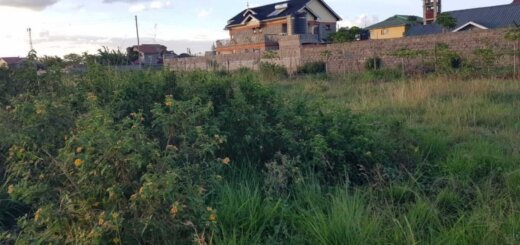Exploring the Benefits and Risks of Land Banking: A Comprehensive Guide for Investors in 2023

Introduction

Land banking is the process of purchasing land with the intention of holding it for future development or resale. It can be a lucrative investment strategy, but it also carries certain risks that potential investors should be aware of before diving in. In this blog, we’ll explore the important benefits and risks of land banking to help you make an informed decision about whether it’s right for you.
Benefits of Land Banking
- Potential for capital growth: One of the primary benefits of land banking is the potential for capital growth. Land values can increase over time due to factors such as population growth, urbanization, and changes in demand for certain types of properties. If you choose to hold onto the land for a long period of time, you may be able to sell it for a higher price later on.
- Diversification: Another benefit of land banking is the opportunity to diversify your investment portfolio. Land is a tangible asset that is not subject to the same market fluctuations as stocks and other securities, which can make it a more stable investment option.
- Tax advantages: Depending on your situation, you may be able to take advantage of tax benefits when it comes to land banking. For example, you may be able to claim deductions for expenses related to maintaining the land, such as property taxes and insurance.
- Potential for passive income: In some cases, you may be able to generate passive income from land through activities such as leasing it for farming or other purposes
- Potential for appreciation: Land values can appreciate over time due to factors such as population growth, urbanization, and changes in demand for certain types of properties. If you choose to hold onto the land for a long period of time, you may be able to sell it for a higher price later on.
- Flexibility: Land banking gives you the flexibility to hold onto the land and wait for the right opportunity to develop or sell it. This can allow you to take a long-term approach to investing and potentially realize greater returns over time.

- Control: When you own land, you have control over how it is used and developed. This can allow you to shape the direction of your investment and potentially create value through strategic planning and development.
- Inheritance: Land can also be a valuable asset to pass down to future generations. If you have children or other loved ones who you wish to leave an inheritance to, land can be a meaningful and lasting gift.
It’s important to keep in mind that these benefits may not always be realized and there are risks involved with land banking. It’s important to do your due diligence and carefully consider the potential risks before making an investment.
Risks of Land Banking
- Illiquidity: One of the main risks of land banking is illiquidity, which refers to the difficulty of converting an asset into cash. Land can be difficult to sell, especially if it is located in a remote or less developed area. This means it may take longer to recoup your investment if you decide to sell the land.
- Market fluctuation: Another risk to consider is market fluctuation. While land values can increase over time, they can also decrease due to changes in demand or economic conditions. It’s important to do your research and consider the potential risks before making a land banking investment.
- Costs of ownership: Owning land comes with a number of costs, including property taxes, insurance, and maintenance expenses. These costs can eat into your profits and reduce your overall return on investment.
- Development risks: If you plan to hold onto the land for future development, there are a number of risks to consider. For example, you may encounter challenges obtaining the necessary approvals and permits, or you may face delays or cost overruns during the development process.

- Environmental issues: Land may have environmental issues that could impact its value or development potential. For example, the land may be contaminated with hazardous materials, or it may be located in an area prone to natural disasters such as floods or earthquakes. It’s important to thoroughly research the land and consider any potential environmental risks before making an investment.
- Zoning and regulatory issues: Land may be subject to zoning and regulatory restrictions that could impact its development potential. For example, the land may be designated for agricultural use, or there may be limits on the types of structures that can be built on the property. It’s important to understand these restrictions and consider how they may impact your investment.
- Financing difficulties: It can be challenging to secure financing for land purchases, especially if the land is located in a remote or less developed area. This can make it more difficult to purchase land or fund development projects, which can impact your return on investment.
- Competition: Land banking can be a competitive field, with many investors vying for prime properties. This can drive up prices and make it more difficult to secure a good deal on land.
Conclusion
Land banking can be a lucrative investment strategy with the potential for capital growth, diversification, and passive income. However, it also carries certain risks such as illiquidity, market fluctuation, and costs of ownership. If you’re considering land banking, it’s important to do your research, seek the advice of a financial professional, and be prepared for the costs and challenges that may arise along the way. With careful planning and due diligence, land banking can be a rewarding investment that helps you achieve your financial goals.



